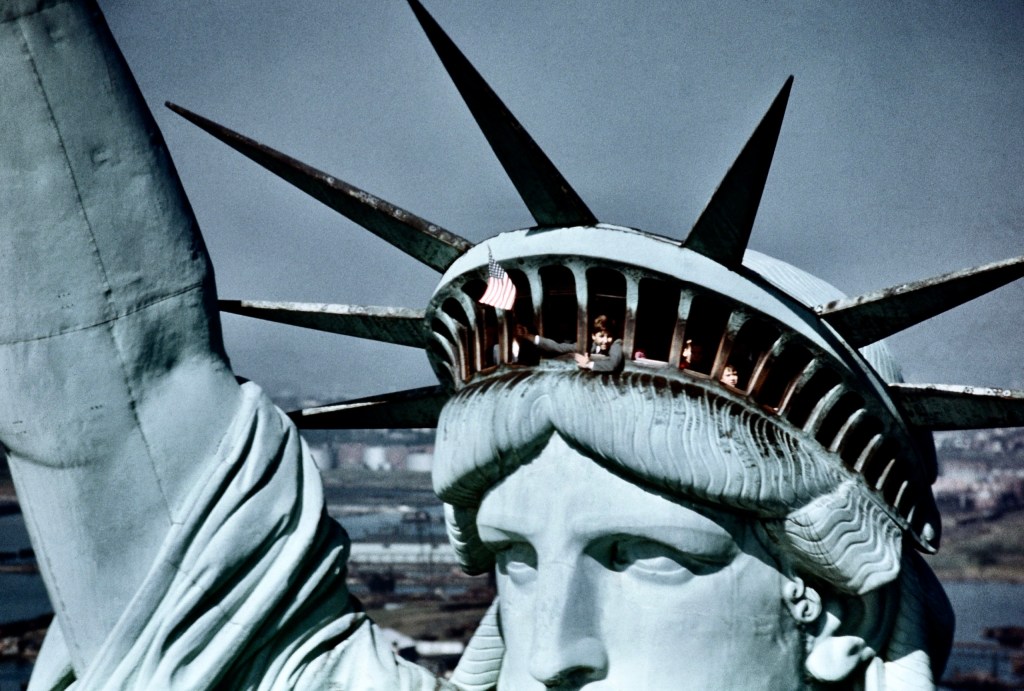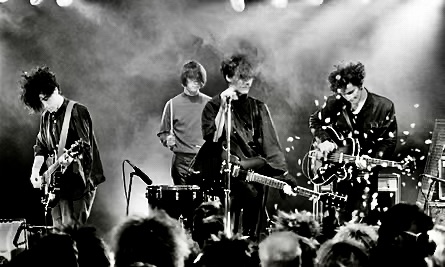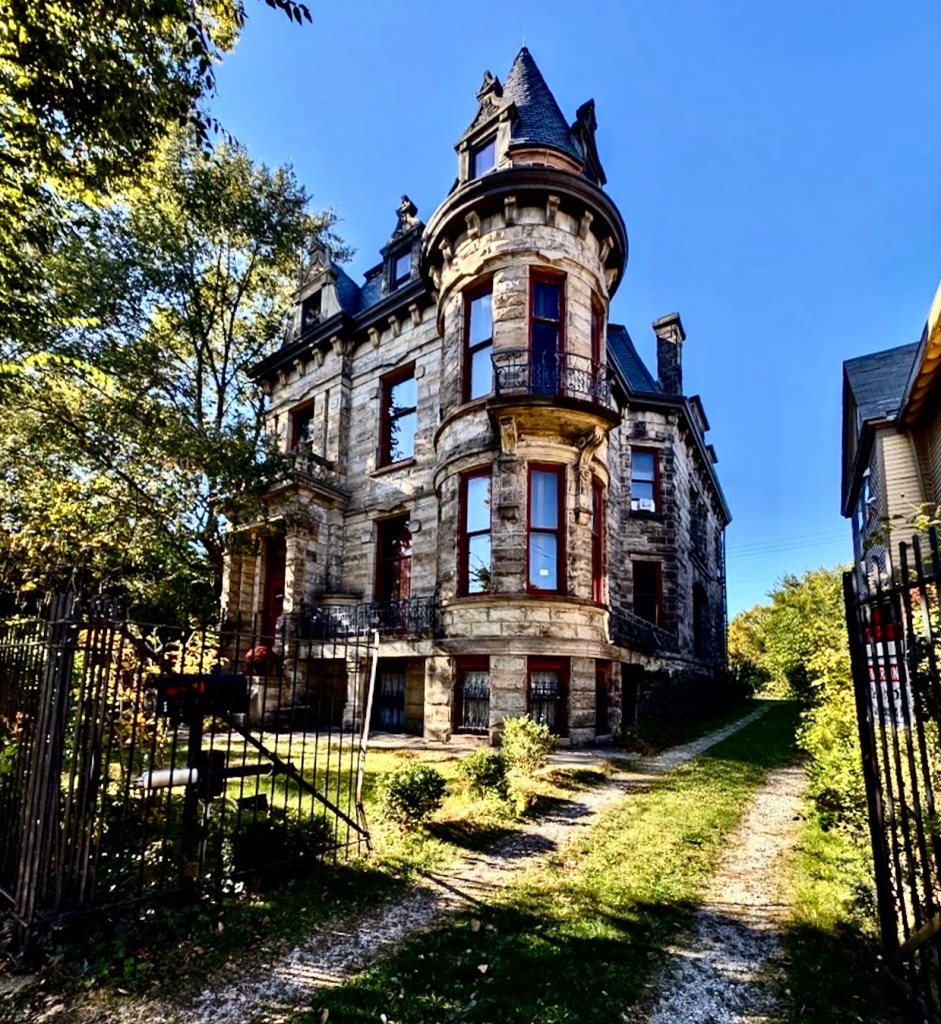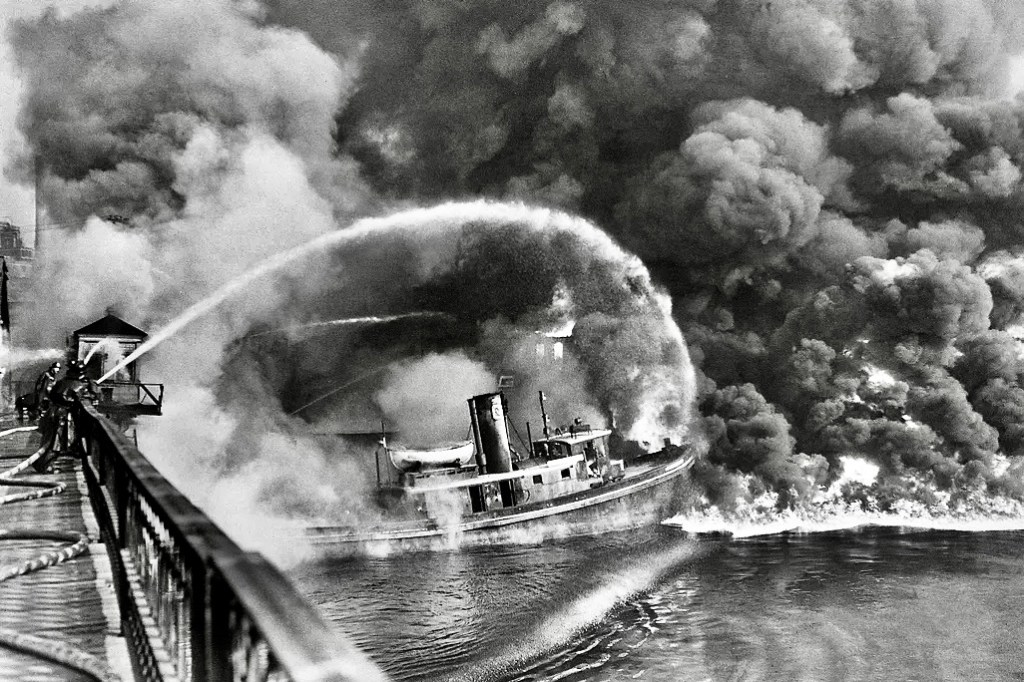By Ed Staskus
The first thing Oliver and Emma’s father did when he pulled into the St. Ignatius High School parking lot on the near west side of Cleveland was park the car, get out, and take his children on a tour of the campus.
“It’s a lot different than when I was here,” he told them.
“When was that, dad?”
“The middle 1980s,” he said.
“That was another century,” Oliver said.
“That’s right.”
“That was another millennium,” Emma said. She was two years older than Oliver and knew more big words.
“That’s right, too, although both of you are making me feel old.”
“How is it different?” Oliver asked.
“It’s bigger,” their father said, looking around.
When St. Ignatius opened in 1886 as a school for Cleveland’s Catholic young men it was both a high school and a college. The college later became Jonn Carroll College and moved to the east side. St Ignatius stayed where it was in its Gothic edifice on W. 30th St. and Carrol Ave. The grounds got bigger over the years, expanding to fifteen acres. The Saint Mary of the Assumption Chapel was built in 1998 and the O’Donnell Athletic Complex was unveiled in 2001. The Welsh Academy, a middle school for urban boys, was established in the former Foursquare Church building in 2019. By then the campus had grown to nineteen buildings and three athletic fields on twenty three acres.
“Are you giving a speech today?” Emma asked.
“They asked me to speak at Career Day, but it’s not a speech, more like a panel discussion with other graduates followed up by questions from the students.”
Their father was an electrical engineer and brought home the bacon so the home fires stayed lit.
“Dad, would it be alright if we went to see the Franklin Castle while you give your speech?” Emma asked.
Oliver and Emma were the Monster Hunters of Lake County. No matter how scary, they couldn’t resist anyplace full of spooks and monsters, especially one that was old and creepy and that happened to be nearby.
“It’s not far away, so it should be all right. Be careful crossing streets and be back here in two-and-a-half hours.”
They were a block away when they found a Lime e-scooter with time still ticking on its clock. They had a short argument about who was going to pilot the e-scooter, an argument Emma won by hopping on it and grasping the handlebars. Oliver wrapped his arms around her waist from behind and they sped off in the bike lane. They went down Fulton Rd., turned on Woodbine Ave., went round at a traffic circle getting onto W. 38th St., and before they knew it they were at the Franklin Castle, which was on the north side of Franklin Blvd. They had gone about a mile.
“You’re not going to tell mom and dad we rode this scooter, are you?” Emma asked her brother.
“No way!” Oliver said.
They loved their parents more than anything, but didn’t love everything they said and did. They weren’t in love with crime and punishment, for sure. They thought it was unfair that they couldn’t discipline their parents, who made mistakes just like them, because of the size difference between them.
“It’s like Godzilla always says,” their friend Tommy One Shoe said. “Might makes right.”
Franklin Castle was a big stone house built in the early 1880s. It was built where a two-story wood house called Bachelor’s Hall had once stood before being torn down. Bachelor’s Hall was built by the Wolverton brothers. They fought in the Civil War with the Ohio Light Artillery. Only two of the four brothers survived the war. Only one came back to Cleveland. After he died and after Franklin Castle was built visitors reported seeing ghostly soldiers in faded uniforms in the backyard galloping on desperate horses.
The stone house was built by Hannes Tiedemann, a successful merchant and banker, for his family. His family was his mother, his wife Louise, and six children. His15-year-old daughter Emma died of diabetes. Then his mother Wiebeka died. In the space of no time he buried three more children who died of infectious diseases, two of them of measles. The last children, Dora and August, survived.
The family lived in their new home on Franklin Blvd. until Louise died in 1895. Soon after the new century dawned Dora and August died. Their father retired to Steinberg, his sprawling summer house on Lake Erie in nearby Lakewood. He passed away in 1908, alone and worn out by tragedy. Franklin Castle became the home of the German Socialist Party. When nobody liked socialists anymore it became the German American League for Culture. Their singing club was very popular, as was the beer garden. Singing in the garden waving a stein was always a good time. Everybody called it Eintracht Hall in those days.
After the Germans moved out in 1968 the Romano family moved in. The lady of the house was warned that “this domicile is evil and you shouldn’t have come. You should move out.” One winter day she sent her children to the top floor to play. When they came down they told their parents about finding a sad little girl in a ragged dress who asked for a cookie to cheer her up.
They searched the top floor but no child was found. When it happened again they locked the door and kept it locked. They started hearing organ music on weekends, even though there was no organ in the house. Their children woke up in the middle of the night to find their blankets being yanked off them by unseen hands. The family moved out in 1974 and the house was taken over by a man who began offering public tours of “Haunted Franklin Castle.”
“What’s so haunted about it?” Emma asked.
“Lights go on and off by themselves, mirrors suddenly fog up, voices can be heard in empty rooms, and doors fly off their hinge, for starters,” Oliver said.
“Let’s go inside and see,” Emma said.
“Does anybody live there?”
“When I asked dad, he said nobody lives there anymore.”
When they tried to get inside the house they discovered all the doors were locked. They knocked on the front door. They looked through windows. They knocked on the back door. Nobody answered.
They were scratching their heads outside the back door when Emma plucked two bobby pins out of her hair. The first pin was going to be a replacement for a key. She bent the rounded end until it was perpendicular to the two free ends. She stuck the rounded end into the key slot. It would act as a handle. She unbent and flattened the second pin, making a long straight pick. She bent one end slightly and slid the bent end into the top half of the keyhole, above the pin she had already inserted into the lock.
Emma used her bobby pin to push the pins up, one at a time, until the cylinder was free to turn. She turned it with the first pin she had made into a handle. It was easy as pie. The door opened and they went inside.
“How did you learn to do that?” Oliver asked.
“It’s a secret.”
“No, tell me.”
“I’ll tell you when you’re 12-years-old like me.”
The back door suddenly slammed shut. The air got hot and gluey. It got dark as a tar pit. They heard heavy footsteps.
“Who has broken into my castle?” the voice of bad juju behind them said.
Emma almost jumped out of her bobby pins. Oliver, however, kept his nerve. He turned around and said to the eight-foot tall man spirit, “Can I see your deed to this place?”
The man spirit looked like a butler from an old movie. He was wearing a black suit with a white dress shirt, black bow tie, and a waistcoat. He had a long face and a nose that was as sharp as a hatchet.
“I don’t have a deed,” he said.
“Then it’s not really your castle, is it?”
“Well, no, but I live here.”
“We heard the castle is haunted.”
“You heard correctly, young man. There are ghosts and phantoms in every room.”
“Are they mean?”
“Not all of them, but you would be playing with fire if you thought otherwise.”
“Can you show us around?”
“No, I can’t. I have to return to my quarters.”
“Are they upstairs? Maybe we could follow you.”
“No, my quarters are in the carriage house in the back.” He pointed through a window. “There is an underground tunnel that runs from the basement, under the rose garden, and to my quarters.”
Oliver and Emma looked through the window. There wasn’t a rose garden or a carriage house in the backyard. When they turned back to the butler, he wasn’t there anymore. There was a pile of sand where he had been standing.
“Where did he go?”
“Maybe he went down to the basement.”
“Let’s go look.”
The basement was dark and musty. It had a smell they didn’t recognize. They didn’t know liquor had been made in the basement during Prohibition. A whiskey still was still in a hidden room of the basement, behind a sealed panel in the wall. They saw a trapdoor in the floor.
“Maybe he went down there,” Emma said.
When they pulled the trapdoor open, it went nowhere. There wasn’t a tunnel, or anything, just loose-packed dirt. It was a dead-end. Worms were slithering in the dirt.
“Oh, gross,” Emma said.
“I like glow worms the best,” Oliver said.
“I like gummy worms the best,” Emma said.
They went back upstairs. There was a large oil painting in the living room above the fireplace. The painting was of Hannes Tiedemann, his wife Louise, their children, Dora and August. Every time Oliver looked at it out of the corner of his eye he thought they were moving their heads and looking at him. He stopped looking out of the corner of his eye. They stopped looking at him.
There were built-in bookcases on both sides of the fireplace. The shelves were packed with books. All the books were moldy except for one. The book looked new. It’s title was “The World Without Us.”
“Let’s go upstairs,” Oliver said.
The stairs were wide and the handrails were dark brown wood. They felt damp and sticky. There was a small round table on the landing halfway up. There was a recently lit cigar in an ash tray on the table. Smoke like a garden snake curled up to the ceiling.
“That smells terrible,” Emma said.
“It smells like old armpits,” Oliver said, stubbing the cigar out.
When they got to the top of the stairs a wall of fog materialized in front of them. It was a green and yellow fog. Emma took a step into it. She began to lose her way. Oliver pulled her back.
“I thought I was going to pass out,” she said, rubbing her eyes.
There were four bedrooms on the second floor. There was a collection of small colored glass bottles full of liquids on a side table in the first of the bedrooms. The bottles were labeled. One said, “This Will Make You Larger.” Another one said, “This Will Make You Smaller.”
“It’s like Alice in Wonderland,” Oliver said.
Only one bottle was made of clear glass. It said, “This Will Make You Disappear.”
“I could use that on some bullies I know,” Emma said. She reached for the bottle. Just as she was about to put it in her pocket it disappeared. A voice whispered in her ear. “That’s not for you.”
In another bedroom the outside shutters were loose. They banged against the window frame when the wind blew. When Oliver opened the window and reached for the shutters to secure them, they shut and locked themselves. As soon as he walked away they unlocked themselves and started flapping in the wind again.
“Things have got a mind of their own in this house,” he said.
The next bedroom had spiderwebs in every corner. There was fossilized cordwood laid in the fireplace grate. There was a bed and there was a sofa, too, big enough to sleep in. Rotting curtains rustled even though the windows were closed and the air in the room was fetid. There was a diary on the bedside table.
“Let’s take a look at this book,” Emma said. “Maybe it will tell us something about this house.”
When they opened the book, however, as they flipped the pages they crumbled into yellow fragments. A shred of a page whispered, “Whoever reads my journal, beware of the creature below.” The yellow fragments sprinkled themselves all over the floor. When Oliver and Emma turned to leave, the fragments gathered themselves and transformed into an arm that reached for their legs. The fingers were long as carrots. They ran out of the room.
When they opened the door of the last bedroom it was inky black inside, even though the curtains were pulled back and they could see through the window that it was sunny and bright outside.
“Let’s not go in this room,” Emma said.
“This house is creepy but it isn’t really any more creepy than that abandoned amusement park in Chippewa Lake dad stopped at last year,” Oliver said. “The one where he said they filmed the movie ‘Closed for the Season.’ The Ferris wheel, remember how it was all rusty, and the Fun House, some of the old walls were still there, painted in Day-Glo green, it was kind of sad.”
“It was closed forever,” Emma said.
“That’s a long time,” Oliver said.
They took the stairs to the top floor ballroom. It was put in by Hannes Tiedemann to cheer up his wife, Louise, after the tragedies the family suffered. He thought she might dance her sorrows away. The ballroom was large, stretching the length of the house. When it was added to the house so were turrets and gargoyles. It was what made the house look like a castle.
The ballroom was empty. They walked the length of it, their footsteps echoing behind them. The echo was behind time, lagging a few seconds behind their footsteps. When they turned around to go back the way they had come the echo was gone. There was a specter blocking their way. It was a skeleton wearing a black hooded cloak and carrying a scythe. It was the Grim Reaper.
“Well, well,” the Grim Reaper said. “What have we got here, Hansel and Gretel?” He grinned looking down on them and then laughed like a hen with hiccups.
“Oh, oh,” Emma said, looking him up and down. She didn’t like what she was seeing or hearing. Who laughs like a hen with hiccups?
“No, we’re not Hansel and Gretel,” Oliver said. “Who do you think you are? It’s not Halloween. And what’s with the laugh?”
“Who do I think I am? I am the Prince of Darkness, Lord of the Flies, and Old Nick all wrapped up in one. I am Scratch and that’s no Halloween nonsense. I am the Grim Reaper.”
“All right, Mr. Grim, but what’s with the laugh?”
“I’ve got something in my craw I just can’t shake.”
“Would that be the Angel of Life?”
“Never you mind, young man.”
“Why are you calling us Hansel and Gretel? Do you think you are going to eat us?”
“I ask the questions around here,” the Grim Reaper said. “What are you doing in this castle?”
“We have a professional interest in Franklin Castle,” Oliver said. “We’re the Monster Hunters of Lake County.”
“Have you lost your way? This is Cuyahoga County. On top of that, you’re nothing but children. What kind of professional interest could you possibly have in anything? Are you half-pints even in school?”
“I just started middle school, I’ll have you know,” Emma said.
She had seen the Grim Reaper in a history book, a long-haired skeletal figure from the 14th century wearing wings and carrying a scythe. His black clothing went back to the early 19th century, when people started wearing black at funerals. The full Monty, hooded skeleton, black robe, and scythe, became common around the mid-19th century. That’s what he looked like in “A Christmas Carol” by Charles Dickens, wearing a dark cloak with only a single gesturing hand to be seen.
“People fear me, you know,” the Grim Reaper said.
“I once heard a song called ’Don’t Fear the Reaper,’” Oliver said.
“All our times have come here, but now they’re gone, seasons don’t fear the reaper,
nor do the wind, the sun, or the rain.”
“That was some tough talk by the Blue Oyster Cult,” the Grim Reaper said. “Do you know what their new album last year was called?”
“No.”
“It was called ‘Ghost Stories.’ That’s what they’re going to be sooner or later. I saw one of their shows. After the show I made a joke, asking them, ‘What did the chicken say to the Grim Reaper?’ The drummer was like you. He asked me why I was asking. I told him because I was death myself.”
“What did he say?”
“He said, ‘I’ll talk louder then.’ He was half deaf from his own loud music and misunderstood what I said.”
“What did the chicken say, anyway?”
“I should have looked both ways,” the Grim Reaper chuckled.
“What’s with that stick with the curved knife at the bottom?” Oliver asked.
“It’s not a stick and it’s not a knife. It’s a scythe. It’s for harvesting souls like a farmer harvests crops.”
“Farmers use tractors, not that scythe thing.”
“The scythe is what farmers used to work their fields with.”
“Well, they don’t use them anymore. You should get a tractor.”
“That’s not the point,” the Grim Reaper said, annoyed. “It’s a symbol.”
“Symbols don’t put food on the table,” Emma said. “Dad has to go to work every day and mom just got a job so we will have money for college. We are buying a new house soon, too. Does the FBI know you carry that scythe thing around? It looks like a deadly weapon. Is it legal?”
The Grim Reaper was not used to being peppered with questions. “Why me, why now?” is what he sometimes heard, although most people were scared stiff and didn’t say much of anything. Whenever they asked he always said, “Life is for the living but then I arrive with my scythe and you are done with life. Then they throw dirt in your face. Then the worms eat you. Be glad it happens in that order.”
“Did you hear what I asked you, Mr. Grim?” Emma asked. “Is that thing legal?”
The Grim Reaper was losing his patience. He was normally very patient. Life spans, however, had been increasing century by century and appointed hours had become long in coming. The trend was taxing him. These children questioning his tools of the trade were irksome. Their appointed hour wasn’t close at hand, but if they kept it up he might lose his composure and go after them.
“You should put that thing away and get some nicer clothes,” Emma said. “That robe has got moth holes. It’s really dirty, too. Do you ever wash it?”
That was all the Grim Reaper could stand. He raised his scythe and swung at Emma. She jumped away from the swing. She was a quick girl on her feet.
“Hey, what do you think you’re doing?” Oliver shouted. “Leave my sister alone.”
The Grim Reaper swung his scythe at Oliver, who dodged the sharp blade, grabbed Emma’s hand, and pulled her towards the door. The Grim Reaper weas fuming. He never swung and missed. Was he getting old and feeble? That couldn’t be. He was ageless, after all.
“This house has thirteen fireplaces,” he shouted. “ When I catch you I will burn you both in all of them.”
He ran after Oliver and Emma, his bones clacking and the scythe hissing. He wasn’t fast enough. Oliver and Emma pushed the ballroom doors open and ran down the stairs. The Grim Reaper followed, making up time by straddling the handrail and sliding down it.
Oliver and Emma ran past the reading room on the third floor where a book was reading itself. It was a one thousand page weepie. Tears were splashing onto the pages. They ran past Hannes Tiedemann’s office on the second floor. The ledgers in the office had long since turned to yellow dust.
By the time they got to the ground floor the Grim Reaper was hard on their heels. A voice called out to them, “Come this way.” It was the ghost of Hannes Tiedemann. “Get in this barrel,” he said, pointing to a barrel. They got in it. Hannes Tiedemann fitted a circular lid on top of the barrel.
After coming from Germany as a boy Hannes Tiedemann had worked as an apprentice barrel maker before getting into wholesale groceries and later into banking. He liked money well enough, but never lost his fondness for barrels.
The Grim Reaper searched the ground floor, the foyer, parlor, and dining room. He searched the toilet room. He came up empty. Gnashing his teeth he went up and came back down the servant’s stairwell. He was standing in the foyer when he noticed his reflection in a full-length mirror. Looking himself over he thought maybe the brat was right. He was looking shabby. He needed a new robe. He checked his wallet. He had enough cash to get something nice. He went out the front door and disappeared down Franklin Ave. towards the stores on W. 25th St.
When Oliver and Emma were sure he was gone they got out of the barrel and ran outside to where they had left their Lime e-scooter. It wouldn’t start, however. It had timed out. Neither of them had a credit card. Neither of them had ever had a credit card. They pushed the e-scooter off the sidewalk and leaned it against the wrought-iron fence surrounding the house.
It was a long walk back to St. Ignatius High School. They were very tired by the time they got there. Their father put them in the back seat of their Jeep SUV. He drove north to Lake Erie and took a right. He took the Shoreway back to Lake County. Oliver and Emma slept like the dead all the way home.
Ed Staskus posts monthly on 147 Stanley Street http://www.147stanleystreet.com, Made in Cleveland http://www.clevelandohiodaybook.com, Down East http://www.redroadpei.com, and Lithuanian Journal http://www.lithuanianjournal.com. To get the site’s monthly feature in your in-box click on “Follow.”
“Bomb City” by Ed Staskus
“A police procedural when the Rust Belt was a mean street.” Sam Winchell, Beyond Books
Available on Amazon: https://www.amazon.com/dp/B0F1LM1WF9/ref=sr_1_1?crid=2MYAQAOZIC2U9&dib=eyJ2IjoiMSJ9.hTm7BGbiQbSe5ZapFwYPPfcwOpTe-Vdg6VLE4aGyTyk.Z0R-VNBWWEcvKcNaO9LdCOUnNIOOXgvYkRS_FXiXuHk&dib_tag=se&keywords=bomb+city+ed+status&qid=1742136726&sprefix=bomb+city+ed+staskus%2Caps%2C84&sr=8-1
Cleveland, Ohio 1975. The John Scalish Crime Family and Danny Greene’s Irish Mob are at war. Car bombs are the weapon of choice. Two police detectives are assigned to find the bomb makers. Revenge is always personal. It gets personal.
A Crying of Lot 49 Publication










